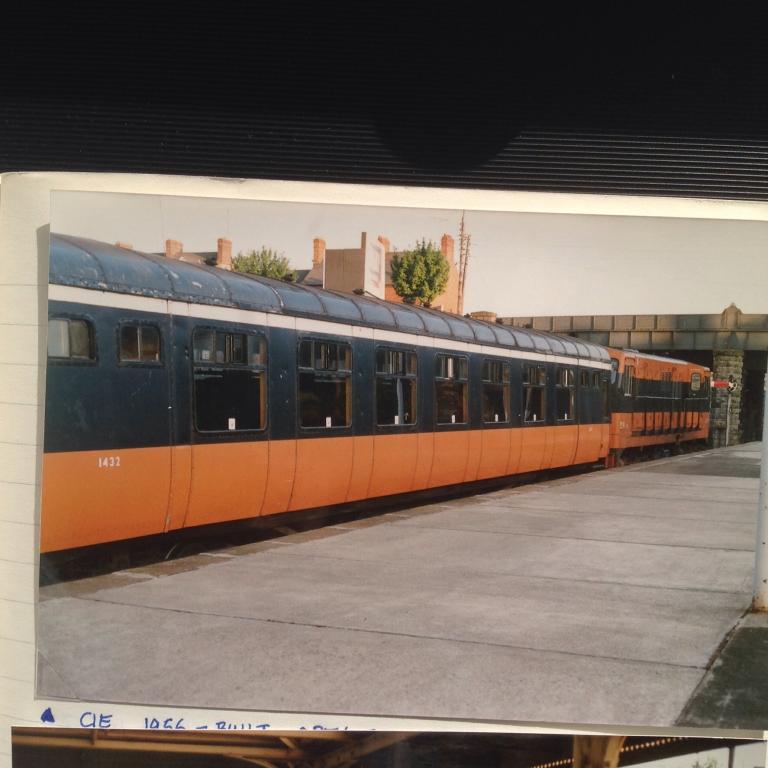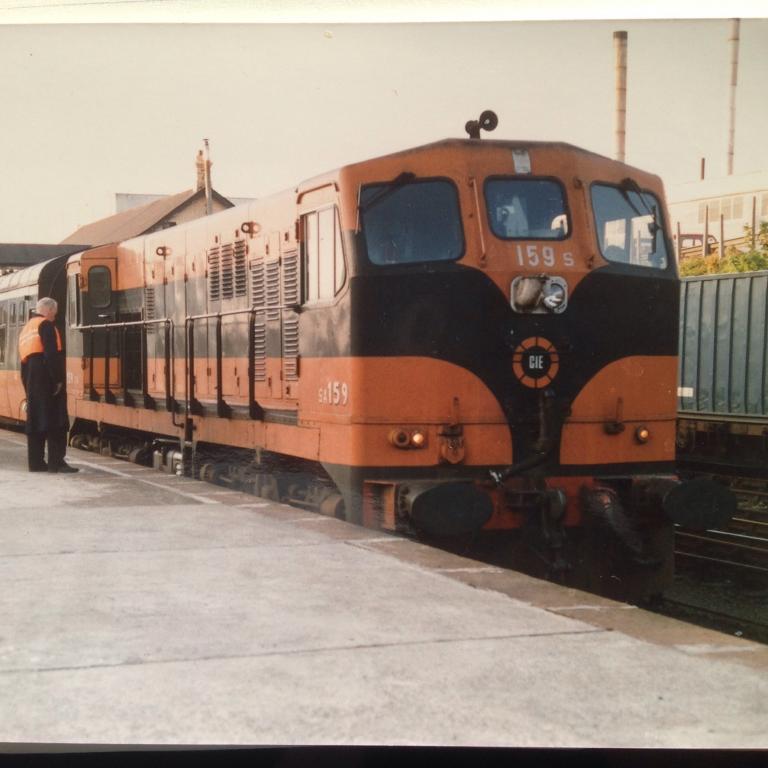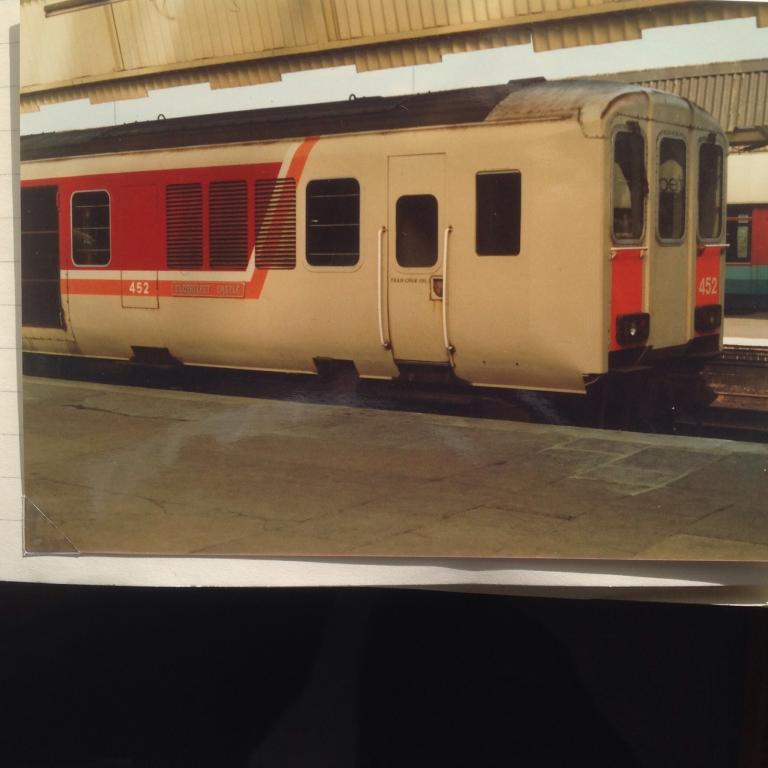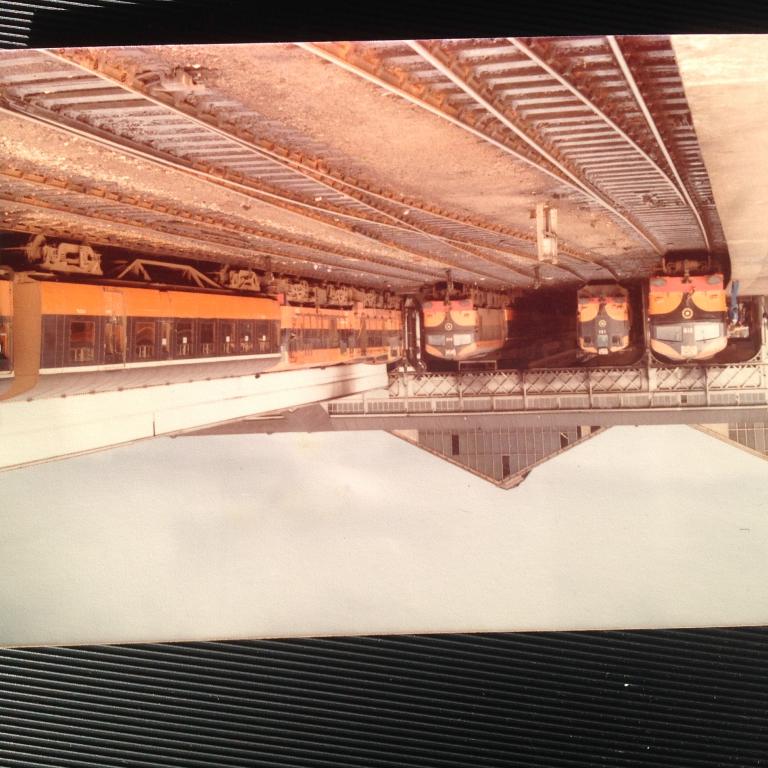-
Posts
15,689 -
Joined
-
Last visited
-
Days Won
388
Content Type
Profiles
Forums
Resource Library
Events
Gallery
Blogs
Store
Community Map
Everything posted by jhb171achill
-
The Official Irish 'Might Have Beens' Thread
jhb171achill replied to minister_for_hardship's topic in General Chat
Rack Railways and zig-zag reversals. One of each of the above were at one time planned. The Ballymena, Cushendall & Red Bay Railway had a one-time plan to bring their line down to Red Bay itself in order to unload iron ore for export at the pier there. Had that happened, would have had one of the most scenically spectacular, steeply graded, (and doubtless short lived!) lines in the country. It would have required several zig zag reversals, as seen in South America and some Indian narrow gauge lines. In the Mourne Mountains there was a proposal as late as the 1960s to build a rack railway somewhere in the Mournes (I have the details somewhere) in the vicinity of the Silent Valley, for tourists. An Irish Snowdon Mountain line. -
Of all things ballast and hoppers
jhb171achill replied to Junctionmad's question in Questions & Answers
There were at least two GSWR ones converted. 8456 was one, and the longer surviving one. I don't know what the other was but I may have the info in the Catacombs; I'll look today. You're absolutely right about the 1977 ones. They were the first ever yellow wagons and were that way from the start, while others remained brown. The two rebuilt GSWR ones were almost certainly the only other ones to become yellow. -
Brand new ammonias, not yet sent out on trial.
jhb171achill replied to jhb171achill's topic in General Chat
Just, again, for modelling accuracy; looks like the UK ones have black bogies instead of green....but same green chassis. The green is obviously STS's house colours. -
Brand new ammonias, not yet sent out on trial.
jhb171achill replied to jhb171achill's topic in General Chat
The "CIE green" was long gone by then - the shade on these wagons looked more similar, if anything, to UTA green. The bogies, chassis and drawgear were all this shade, not separate types of green. These dark green bogies, like blue ones on the Taras, and (bizarrely) grey ones on the 2600s when delivered, 201s and Mk 4s, become weathered with brake dust on their very first outings! -
Of all things ballast and hoppers
jhb171achill replied to Junctionmad's question in Questions & Answers
That initial black and white photo is actually the same normal yellow seen on all such things nowadays; it's a little over exposed, and clean, which is why it looks so light. The DCDR van, if carrying that lettering, should be all black, or all slate grey (post about 1918). If GSR, all grey. If CIE, all greay plus snail until mid sixties, then all grey plus roundel for a few years, and all brown plus roundel from maybe 1972ish until it was withdrawn. The "H" van to its right also suffers from the preservationists "wagon curse" of black ironwork. They, nor their equivalents, never had black chassis. Note the brown ironwork on the body of the DCDR one - at least that's right. The "black ironwork curse" has made the DCDR's ex-NCC goods brake van, and the RPSI's "Ivan" look like zebras; neither ever had black ironwork. Old black and white photos often imply otherwise, in fact it's rusted metal, which is darker in a b/w photo than badly faded grey paint on wooden planks! Oh - and roofs almost always body colour. Not grey with brown bodies, white or black. But I digress...... -
Of all things ballast and hoppers
jhb171achill replied to Junctionmad's question in Questions & Answers
Which new build plough van? -
Of all things ballast and hoppers
jhb171achill replied to Junctionmad's question in Questions & Answers
The pic above is indeed yellow, Junctionmad, though very weathered (as they usually looked). I think - but stand to be corrected - that two brake vans, possibly both of GSW origin - were done like that, but only one was running latterly. I mentioned that yellow appeared for railway vehicles in the 90s - I meant "ordinary" vehicles (like plough vans), not "yellow machines" and wickhams. Early inspection cars were painted in carriage livery - maroon under the GSR, and the older dark green, fully lines and "snailed" by CIE. The actual Wickham cars were yellow from the outset and were about in the late 70s. At that stage, plough vans and ballast wagons were brown, in standard CIE livery (i.e. brown all over, roof and chassis and wheels included). If you base your layout in the 70s-80s (a fascinating period), that's the way to go. I have a few pics somewhere - probably in upside-down-land; I'll delve. I took them about 1978 and the plough van is brown with CIE roundel. The only diversion from normal lettering was the addition of stencilled "PWD" on some vehicles. -
Wow!! Is there no end to your talents, Nelson! They really do look the business. Very well done as always.
-
Of all things ballast and hoppers
jhb171achill replied to Junctionmad's question in Questions & Answers
Yellow first appeared on "track machines" (bought-in tamping machines) in the 1960s. There was some anecdotal evidence that at least some of the VERY few prior to then were grey. Yellow started spreading to actual railway vehicles in the 1990s. Both this livery, and that last (of several) rebuild were probably about then, I'd say at a guess mid 90s. -
Brand new ammonias, not yet sent out on trial.
jhb171achill replied to jhb171achill's topic in General Chat
That's what I'm thinking, Scahalane. Maybe altered first? -
Of all things ballast and hoppers
jhb171achill replied to Junctionmad's question in Questions & Answers
There is an original GSWR hopper at Downpatrick, in the same original condition in which it was withdrawn from traffic by CIE in the 1980s. Thee is also a plough van there - again, original GSWR state more or less, and same as 8456 would originally have been. If you're modelling either, the plough van is completely wrong livery wise. In GSWR days they were black all over, with white lettering as on the DCDR plough van. In late GSWR, GSR and CIE days up to about 1970 they were slate grey all over. Neither ever had a black chassis, except when all-black. From 1970 all over standard CIE brown, not the shade on the plough van. The hopper remains in untouched, but by now extremely faded and weathered CIE brown. -
Brand new ammonias, not yet sent out on trial.
jhb171achill replied to jhb171achill's topic in General Chat
Possibly a trial one? I have no recollection of any in the trial train which I filmed being different. -
Back to the '70s and '80s
jhb171achill replied to jhb171achill's topic in Photos & Videos of the Prototype
The "P/P" did indeed mean "push-pull". -
Back to the '70s and '80s
jhb171achill replied to jhb171achill's topic in Photos & Videos of the Prototype
Unfortunately not, David. I got a pic, though, of the last surviving MGWR bogie coach, erstwhile "Tourist Express" dining car No. 1, by now a withdrawn departmental vehicle, at North Wall. Must look for it. -
Top class, excellent stuff. Looks great in that scale.
-
Back to the '70s and '80s
jhb171achill replied to jhb171achill's topic in Photos & Videos of the Prototype
A final one for today. This was taken in summer 1976. I was at the then-rural (and long closed) Clonsilla station taking photographs. A ballast train appeared and the driver stopped to have a word with the gatekeeper. I ask if I could have a lift; no problem. Health and safety wasn't invented, but neither myself, the driver or the gatekeeper died that day..... So I got a lift to North Wall, where I left the train, took a few photos of shunting and parked old carriages, and hopped over a boundary to the safety of a pavement in Sherriff Street. The signalman there didn't die either..... -
Back to the '70s and '80s
jhb171achill replied to jhb171achill's topic in Photos & Videos of the Prototype
I'll go to eastern China.... -
Back to the '70s and '80s
jhb171achill replied to jhb171achill's topic in Photos & Videos of the Prototype
Taken from the leading cab of a pair of 141s which were on the "Enterprise" that day. I think one of them was 153. -
Back to the '70s and '80s
jhb171achill replied to jhb171achill's topic in Photos & Videos of the Prototype
A sense of anticipation on this sunny evening, as I was en route to the annual RPSI May Tour, in the days when it was known as the "three day tour", not the utterly ghastly title of "international railtour". (No, it's not going to Budapest this year, or any other....) I'm in right cranky mood this morning. Just be that wretched dog barking next door ALL morning. These had BETTER show the right way up, or I will scream very very loudly indeed. You'll hear me, even in New Zealand. The above was the following morning at Heuston. Steam from the RPSI's 85 on right. We're off to Tralee! -
Back to the '70s and '80s
jhb171achill replied to jhb171achill's topic in Photos & Videos of the Prototype
-
trying to get it the right way up.... THIS IS INFURIATING ME!!!!!!!!!!!!!!!!!!!!!!!!!!!!!!!!!!!!!! I was going to post other ones too. But I can't be bothered with this stupid upside down thing.
-
Can't wait to see you NCC jeep - that'll be a treat judging by the rest of your stuff!
-
Absolutely excellent paintwork and conversions! Small hint (in helpful sense)... Maybe paint the red con rods on the "D" to black? Like the early 450 red and cream, an unusual livery on layouts. Looked very well indeed in real life when new.
-
Brand new ammonias, not yet sent out on trial.
jhb171achill replied to jhb171achill's topic in General Chat
No idea, Dive.... they had standard cast CIE numberplates on them if that means anything.... -
Brand new ammonias, not yet sent out on trial.
jhb171achill replied to jhb171achill's topic in General Chat
Livery wise, this is the way they went out. I have a cine of the trial train,but also remember seeing them in early years quite often, when they were clean! (They didn't stay that way).
.png.c363cdf5c3fb7955cd92a55eb6dbbae0.png)







